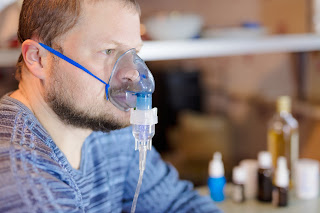When using an inhaler, it’s
imperative to closely follow all instructions, as well as those given by your
doctor. Asthma affects both children and adults. Some people need more than one
medication or inhaler to treat asthma.
Inhalers contain two kinds of medicines--either
long acting or short acting. Short acting inhalers are for relaxing and opening
the breathing tubes of the lungs. They are rescue
inhalers, as they are used for quick relief when a person faces sudden
breathing difficulty. Long acting inhalers are used as a routine medication.
They help to control and prevent painful symptoms associated with asthma. The
medicines might work slowly but the effects last longer. They are not to be
used to treat sudden breathing difficulties.
The two different types of inhalers
must not be confused with one another. For example, consider the below case.
A young child had asthma for which
he needed to take two types of medicine. One is for everyday use-- his
maintenance inhaler called Symbicort (contains the medicines budesonide and
formoterol) and his rescue inhaler called ProAir (contains the medicine albuterol).
While he was at camp, he had a sudden asthma attack. He was taught to use the
red container after every emergency episode, but he accidentally grabbed his
maintenance inhaler instead of the red rescue one. The maintenance inhaler was
slow acting, so it didn’t help him with difficulty of breathing. As soon as he
noticed his mistake, he used the rescue inhaler and that helped him in a much
quicker fashion.
Quick-relief medicines (also called
rescue medicines) work by opening up the airways to relieve symptoms of
wheezing, coughing, and shortness of breath. They are inhaled directly into
lungs and thus opens the airways. They don’t have any long term effects.
Long-term control medicines (also
called maintenance medicines) work by easing inflammations in the airways and
help fighting asthma symptoms. They can be inhaled or swallowed as a tablet,
capsule, or liquid solution.
Quick-Relief
Medicines
Bronchodilators are the most
prescribed rescue medicine. Usually they are administered through an inhaler or
nebulizer. It immediately loosens tight airways that are inflamed. Beta 2
agonists are the most common which are related to adrenaline and give immediate
relief within minutes, but this is just temporary.
If your child has been prescribed
this medication, you must keep it on hand wherever you and the child go.
This medication has a risk of
overuse. If you find that your child has to use it often, consult soon your
doctor for long term medications as well.
